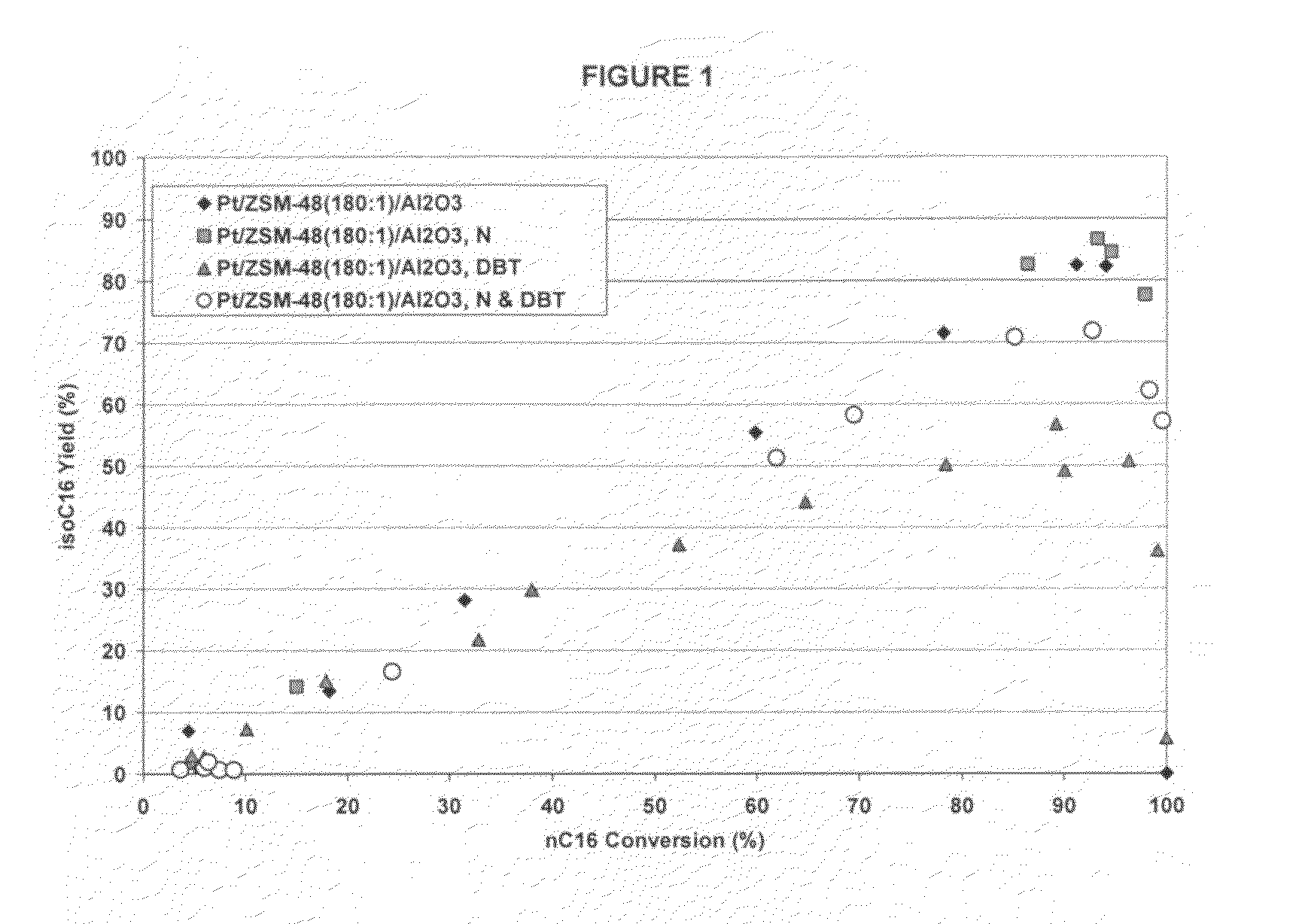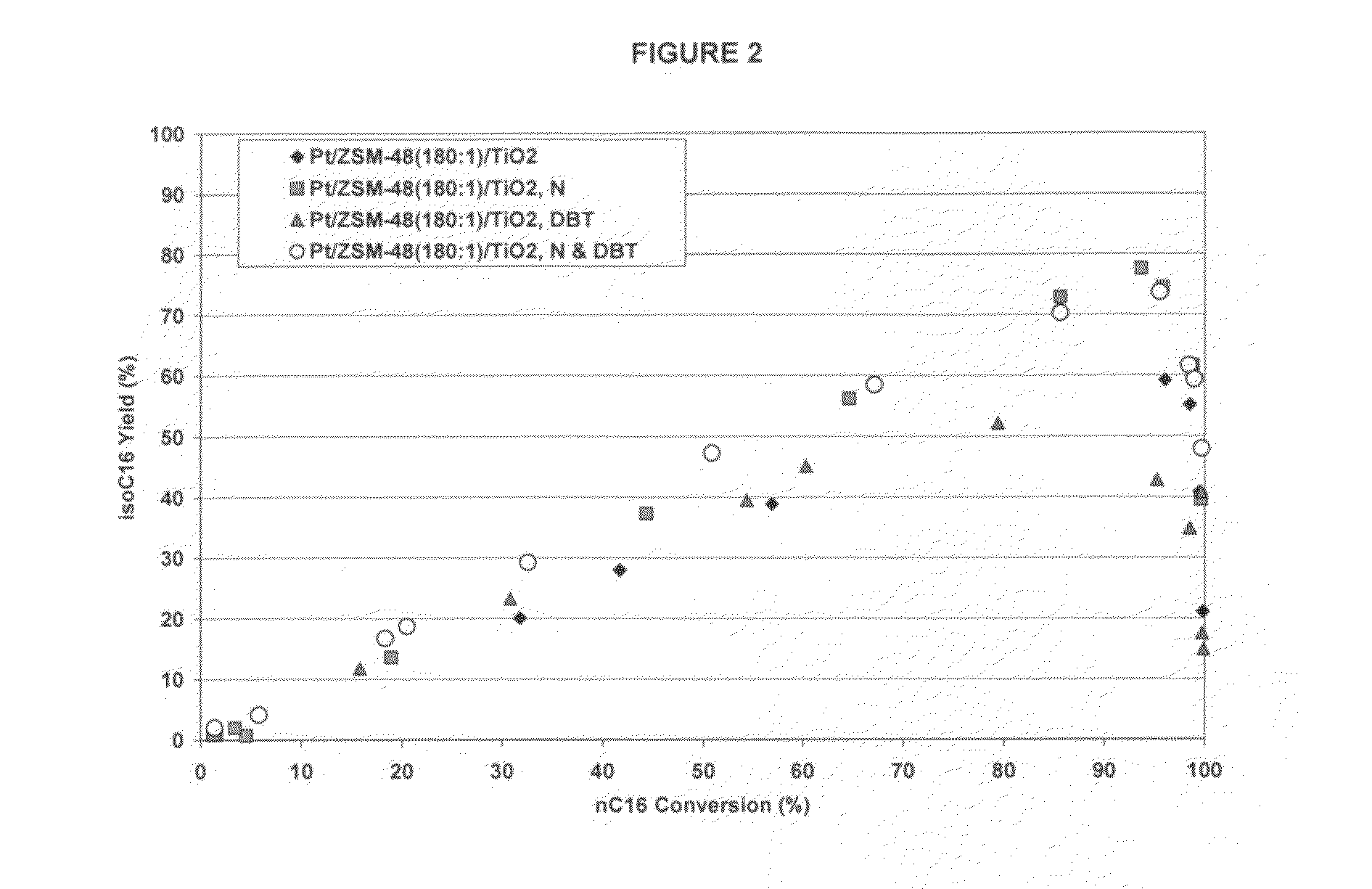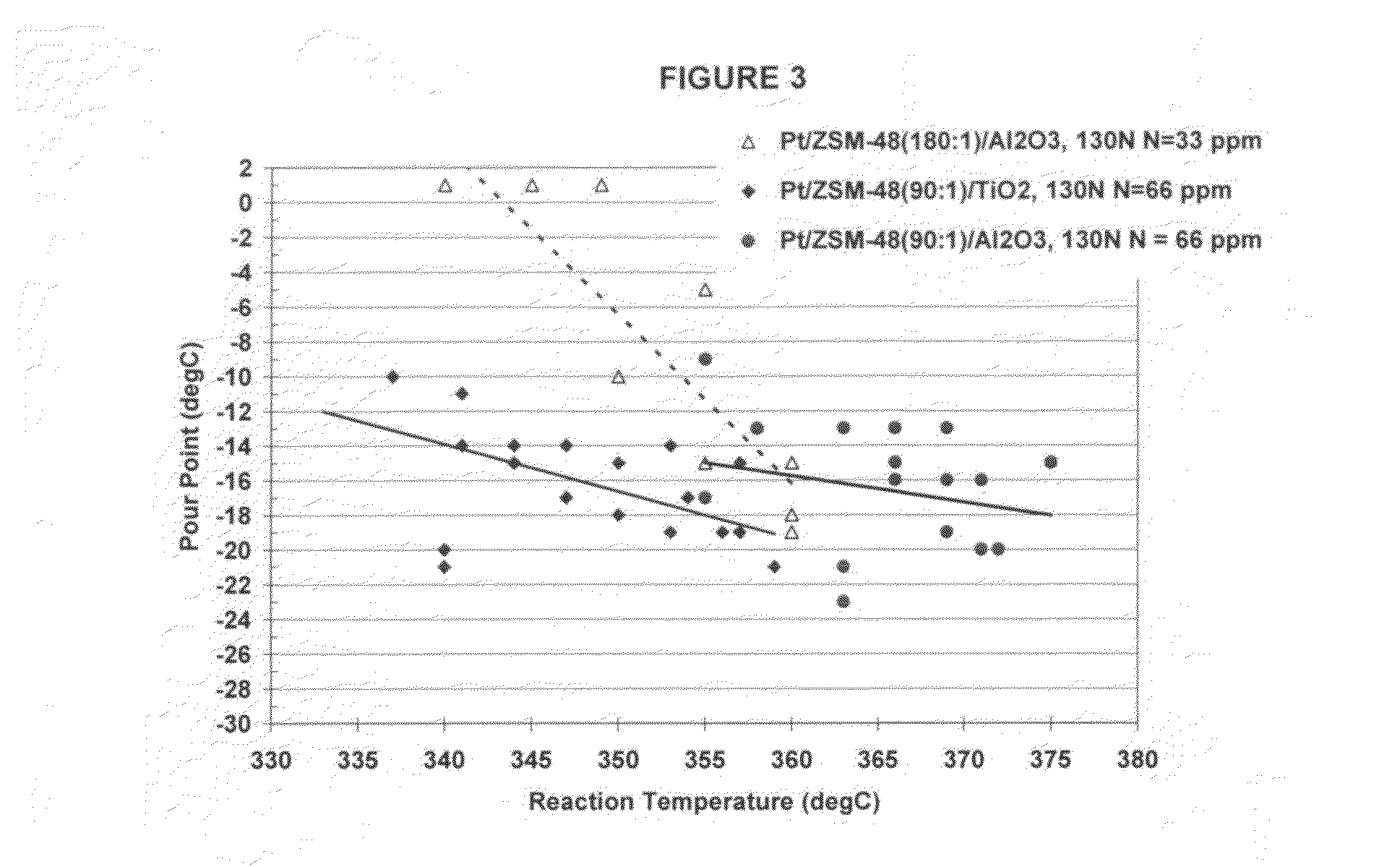Hydroprocessing catalysts with low surface area binders
a technology of hydroprocessing catalysts and binders, which is applied in the field of catalysts, can solve the problems of low viscosity index and also tend to have lower yields, reduce the types of basestocks that can be processed, and the susceptibility of dewaxing catalysts to sulfur or nitrogen poisoning,
- Summary
- Abstract
- Description
- Claims
- Application Information
AI Technical Summary
Benefits of technology
Problems solved by technology
Method used
Image
Examples
example 1
0.6 wt % Pt(IW) on 65 / 35 ZSM-48(90 / 1) / TiO2
[0044]65% ZSM-48(90 / 1) and 35% Titania were extruded to a 1 / 16″ quadrulobe. The extrudate was pre-calcined in N2 @1000° F., ammonium exchanged with 1N ammonium nitrate, and then dried at 250° F., followed by calcination in air at 1000° F. The extrudate was then was loaded with 0.6 wt % Pt by incipient wetness impregnation with platinum tetraammine nitrate, dried at 250° F., and calcined in air at 680° F. for 3 hours. Table 1 provides the surface area of the extrudate via N2 porosimetry.
[0045]A batch micro-autoclave system was used to determine the activity of the above catalyst. The catalyst was reduced under hydrogen followed by the addition of 2.5 grams of a 130N feed (cloud point 31). The reaction was run at 400 psig at 330° C. for 12 hours. Cloud points were determined for two feed space velocities. Results are provided in Table 2.
example 2
0.6 wt % Pt(IW) on 65 / 35 ZSM-48(90 / 1) / Al2O3 (Comparative)
[0046]65% ZSM-48(90 / 1) and 35% Al2O3 were extruded to a 1 / 16″ quadrulobe. The extrudate was pre-calcined in N2 @1000° F., ammonium exchanged with 1N ammonium nitrate, and then dried at 250° F. followed by calcination in air at 1000° F. The extrudate was then steamed (3 hours at 890° F.). The extrudate was then loaded with 0.6 wt % Pt by incipient wetness impregnation with platinum tetraammine nitrate, dried at 250° F., and calcined in air at 680° F. for 3 hours. Table 1 provides the surface area of the extrudate via N2 porosimetry.
[0047]A batch micro-autoclave system was used to determine the activity of the above catalyst. The catalyst was reduced under hydrogen followed by the addition of 2.5 grams of a 130N feed. The reaction was run at 400 psig at 330° C. for 12 hours. Cloud points were determined for two feed space velocities. Results are provided in Table 2.
example 3
0.6 wt % Pt(IW) on 80 / 20 ZSM-48(90 / 1) / SiO2
[0048]80% ZSM-48(90 / 1) and 20% SiO2 were extruded to 1 / 16″ quadrulobe. The extrudate was pre-calcined in N2 @1000° F., ammonium exchanged with 1N ammonium nitrate, and then dried at 250° F. followed by calcination in air at 1000° F. The extrudate was then loaded with 0.6 wt % Pt by incipient wetness impregnation with platinum tetraammine nitrate, dried at 250° F., and calcined in air at 680° F. for 3 hours. Table 1 provides the surface area of the extrudate via N2 porosimetry.
[0049]A batch micro-autoclave system was used to determine the activity of the above catalyst. The catalyst was reduced under hydrogen followed by the addition of 2.5 grams 130N. The reaction was run at 400 psig at 330° C. for 12 hours. Cloud points were determined for two feed space velocities. Results are provided in Table 2.
PUM
| Property | Measurement | Unit |
|---|---|---|
| boiling points | aaaaa | aaaaa |
| surface area | aaaaa | aaaaa |
| boiling range | aaaaa | aaaaa |
Abstract
Description
Claims
Application Information
 Login to View More
Login to View More - R&D
- Intellectual Property
- Life Sciences
- Materials
- Tech Scout
- Unparalleled Data Quality
- Higher Quality Content
- 60% Fewer Hallucinations
Browse by: Latest US Patents, China's latest patents, Technical Efficacy Thesaurus, Application Domain, Technology Topic, Popular Technical Reports.
© 2025 PatSnap. All rights reserved.Legal|Privacy policy|Modern Slavery Act Transparency Statement|Sitemap|About US| Contact US: help@patsnap.com



